Afren PLC Bundle
What Became of Afren PLC's Ambitious Oil & Gas Dream?
Once a rising star in the African oil and gas sector, Afren PLC captivated investors with its ambitious plans for continental expansion. Founded in 2004, the company quickly built a diverse portfolio across several countries, including Nigeria and Iraqi Kurdistan. But what ultimately derailed its trajectory, and what lessons can be learned from its rise and fall?
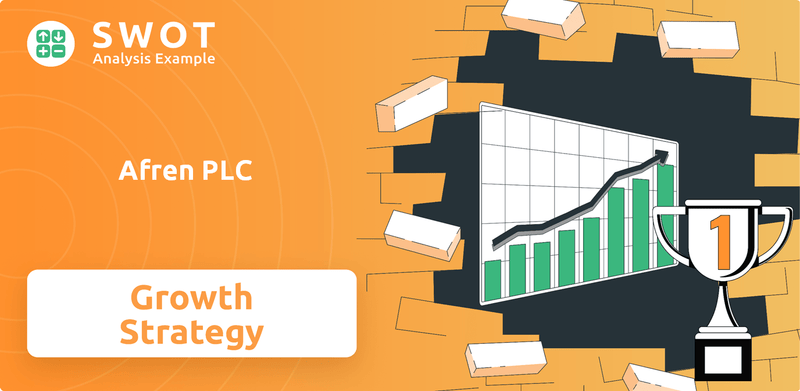
This analysis delves into the Afren PLC SWOT Analysis, examining its past performance and the factors that led to its eventual dissolution. We'll explore the company's Growth Strategy, its ventures in Oil and Gas Company exploration and production, and the Future Prospects it once envisioned. Understanding the Business Analysis of Afren PLC offers valuable insights for any Investment professional or business strategist.
How Is Afren PLC Expanding Its Reach?
Before its dissolution, Afren PLC's Growth Strategy centered on aggressive expansion across West Africa and beyond. The company focused on entering new markets through exploration, production licenses, and strategic acquisitions. This approach aimed to rapidly increase its asset base and revenue streams.
Afren's expansion strategy involved acquiring interests in both established and prospective oil and gas fields. This diversification aimed to leverage its expertise in African exploration and production (E&P). The company's post-IPO growth included assets in Nigeria, São Tomé & Príncipe JDZ, Gabon, Republic of the Congo, Côte d'Ivoire, Ghana, and Iraqi Kurdistan.
Nigeria was a key area for Afren, with assets like Okoro, Setu (OML 112), and Ebok (OML 67) being central to its operations. The company's strategy involved acquiring interests in established and prospective oil and gas fields to diversify its revenue streams and leverage its expertise in African E&P.
In 2013, Afren acquired an additional 23.3% beneficial interest in First Hydrocarbon Nigeria (FHN). FHN held a 45% interest in the OML 26 portfolio of assets onshore Nigeria. This strategic move aimed to broaden the company's producing asset base.
Afren pursued opportunities in gas-rich basins, signing Production Sharing Contracts (PSCs) for OPL 917 and OPL 907 in Nigeria's Anambra basin. These licenses contained existing discoveries, including the Akukwa and Igbariam gas and condensate discoveries.
Afren's expansion initiatives were focused on rapid growth and diversification across Africa. This included acquiring assets and licenses to increase production and reserves. The company aimed to leverage its expertise in the African oil and gas sector.
- Acquisition of additional interest in FHN: This provided access to the OML 26 portfolio, boosting the company's oil reserves.
- Gas Asset Development: Signing PSCs for OPL 917 and OPL 907 in Nigeria's Anambra basin, with existing gas discoveries.
- Focus on Nigeria: Nigeria remained a key area, with assets like Okoro, Setu, and Ebok central to operations.
- Strategic Acquisitions: The company aimed to acquire interests in established and prospective oil and gas fields.
Afren PLC SWOT Analysis
- Complete SWOT Breakdown
- Fully Customizable
- Editable in Excel & Word
- Professional Formatting
- Investor-Ready Format
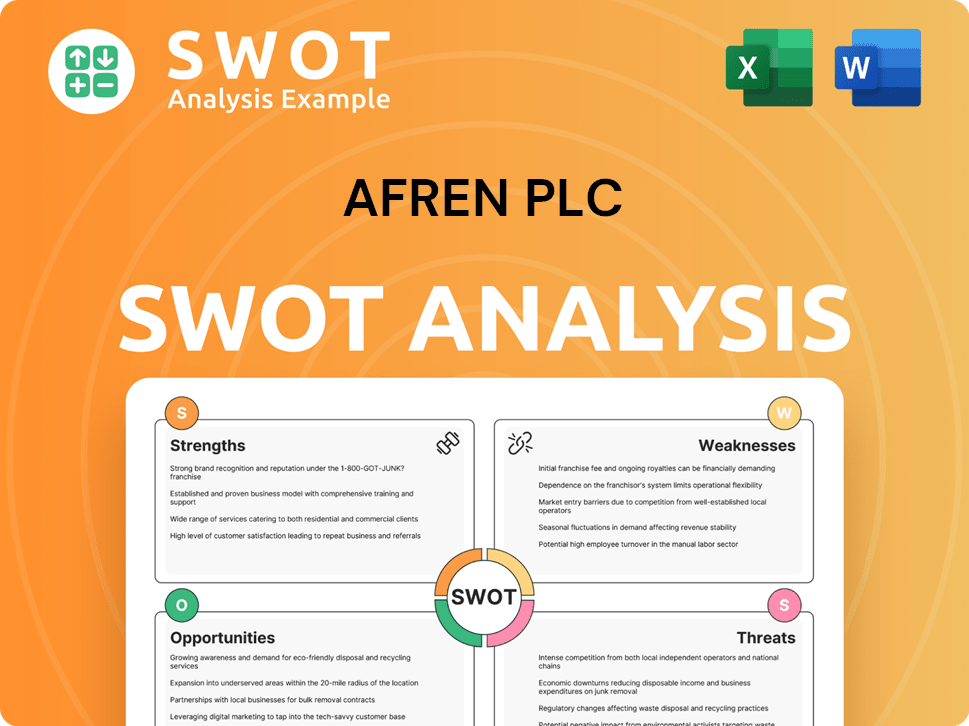
How Does Afren PLC Invest in Innovation?
Prior to its cessation, the innovation and technology strategy of Afren PLC, an Oil and Gas Company, focused on optimizing its exploration and production activities, especially in West Africa. Given its defunct status, specific details on R&D investments or patents are limited. However, its operational approach suggests a reliance on established industry technologies for efficient extraction and reservoir management. This is crucial for understanding the Growth Strategy and Future Prospects of a company that once operated in the oil sector.
Afren's operational strategies, particularly in Nigeria, involved utilizing established technologies like horizontal and deviated well penetrations to maximize production. The company aimed to develop assets rapidly and cost-effectively, indicating an efficient application of existing technologies rather than pioneering new ones. This approach is a key element in the Business Analysis of Afren PLC, highlighting its focus on operational efficiency within the oil and gas industry. For more insights, you can check out the Mission, Vision & Core Values of Afren PLC.
Maintenance and upgrades were also vital. For example, in October 2024, a related company, Afentra, operating in similar regions, planned a 21-day maintenance shutdown. This included power supply improvements, subsea infrastructure inspection, and gas meter installation to monitor emissions. This demonstrates a commitment to operational integrity and environmental considerations, reflecting the technological framework's importance. Furthermore, asset redevelopment, including light well interventions and water injection system upgrades, aimed to boost reliability and production, showcasing an adaptive approach to prolonging field life.
Afren focused on rapid and cost-effective asset development using existing technologies. This approach prioritized efficient application of proven methods over pioneering new ones. The company’s strategy aimed to maximize production while controlling costs.
The company adapted its technological framework through maintenance and upgrades. This included initiatives like power supply improvements, subsea infrastructure inspections, and gas meter installations. These efforts aimed to maintain operational integrity and address environmental concerns.
Afren engaged in asset redevelopment projects to enhance production and extend field life. This included light well interventions and water injection system upgrades. These activities aimed to improve reliability and performance.
The company's operations were primarily concentrated in West Africa, particularly in Nigeria. This geographic focus influenced the choice and application of technologies. The region's specific geological and operational challenges shaped Afren's technological strategies.
Regular maintenance shutdowns, like the planned 21-day shutdown in October 2024, were crucial. These shutdowns allowed for infrastructure improvements and environmental monitoring. This proactive approach ensured the longevity of operations.
Afren relied on established industry technologies for its operations. This included horizontal and deviated well penetrations. The focus was on applying proven methods to maximize production.
Afren's approach to innovation and technology centered on operational efficiency, adapting existing technologies, and maintaining operational integrity. This strategy was crucial for its Investment decisions and overall Growth Strategy.
- Horizontal and Deviated Wells: Used to maximize production from reservoir intervals, particularly in the Okoro and Setu fields in Nigeria.
- Maintenance and Upgrades: Regular maintenance shutdowns, such as the 21-day shutdown in October 2024, focused on power supply improvements, subsea infrastructure inspections, and gas meter installations.
- Asset Redevelopment: Light well interventions and water injection system upgrades were implemented to boost reliability, production, and water injection performance.
- Focus on Established Technologies: The company prioritized the efficient application of existing technologies rather than pioneering new ones, which was a key element of its Business Analysis.
Afren PLC PESTLE Analysis
- Covers All 6 PESTLE Categories
- No Research Needed – Save Hours of Work
- Built by Experts, Trusted by Consultants
- Instant Download, Ready to Use
- 100% Editable, Fully Customizable
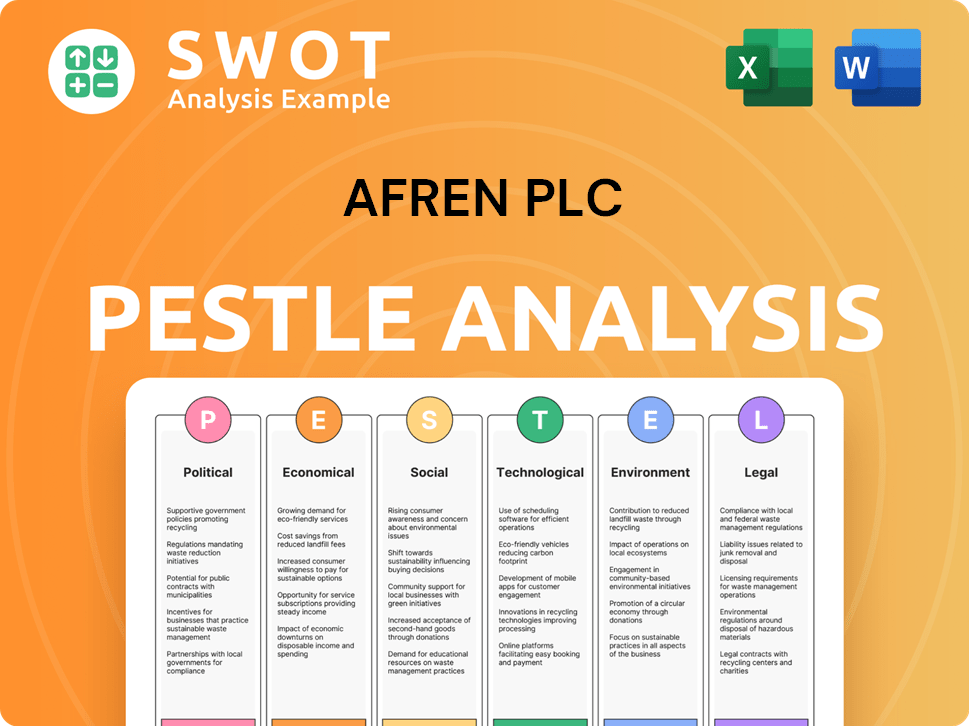
What Is Afren PLC’s Growth Forecast?
Before its collapse, the financial outlook for Afren PLC, an Oil and Gas Company, initially showed promise, driven by significant revenue generation. In 2013, the company's financial performance looked strong, with revenues reaching $1,644.3 million and a net income of $474.8 million. This early success, however, masked underlying financial vulnerabilities that would ultimately lead to its downfall. The company's Growth Strategy was not sustainable, as it was heavily burdened by debt and operational issues.
The decline of Afren PLC became apparent as revenues plummeted and expenses soared. The company's financial troubles were further compounded by failed attempts at debt restructuring. The failure to make a $15 million interest payment in March 2015, which led to a default on its 2016 bonds, signaled the beginning of the end. With its Future Prospects dwindling, Afren PLC faced significant challenges in maintaining its financial stability.
Afren PLC's financial distress was evident in the sharp decline in revenue and the increase in administrative expenses. The company's revenue more than halved to $130.3 million in the quarter ending March 31, from $269 million. Administrative expenses increased significantly to $32.2 million from $6.4 million. The company's assets, including its Kurdistan oil reserves, were written down to zero due to a reduction in estimated reserves.
In 2013, Afren PLC reported revenues of $1,644.3 million, demonstrating a strong initial financial performance. The company also recorded a net income of $474.8 million during the same period. These figures, however, did not reflect the long-term sustainability of the company's financial health.
Afren PLC defaulted on its 2016 bonds in March 2015 by failing to make a $15 million interest payment. This decision was made to preserve cash for a capital structure review. The default was a critical turning point, highlighting the company's escalating financial difficulties and the risk of further decline.
In the quarter ending March 31, revenues plummeted to $130.3 million, a significant decrease from $269 million in the previous period. This sharp decline in revenue underscored the company's operational and financial challenges. The reduction in revenue was a key indicator of the company's impending financial crisis.
Administrative expenses rose sharply to $32.2 million in the quarter ending March 31, compared to $6.4 million in the prior period. This significant increase in expenses further strained the company's financial resources. The rise in administrative costs contributed to the company's deteriorating financial position.
The failure of the proposed debt-for-equity swap and open offer to shareholders to secure refinancing was a major setback. The company faced a potential increase of $600 million in debt and interest rates nearing 27% if restructuring failed. This failure significantly increased the risk of default and asset sales.
Afren's assets, including its Kurdistan oil reserves, were written down to zero on the balance sheet. This write-down was due to a material reduction in estimated reserves. The reduction in estimated reserves significantly impacted the company's valuation and financial stability.
The financial trajectory of Afren PLC was marked by a series of critical events that led to its eventual collapse. These events highlight the importance of prudent financial management and sustainable Growth Strategy in the volatile oil and gas industry. For more information about the company's history, you can read about the Owners & Shareholders of Afren PLC.
- 2013: Strong revenue and net income reported.
- March 2015: Bond default due to unpaid interest.
- Q1 2015: Significant revenue decline and surge in administrative expenses.
- Failure of debt restructuring attempts.
- Asset write-down, including Kurdistan oil reserves.
Afren PLC Business Model Canvas
- Complete 9-Block Business Model Canvas
- Effortlessly Communicate Your Business Strategy
- Investor-Ready BMC Format
- 100% Editable and Customizable
- Clear and Structured Layout
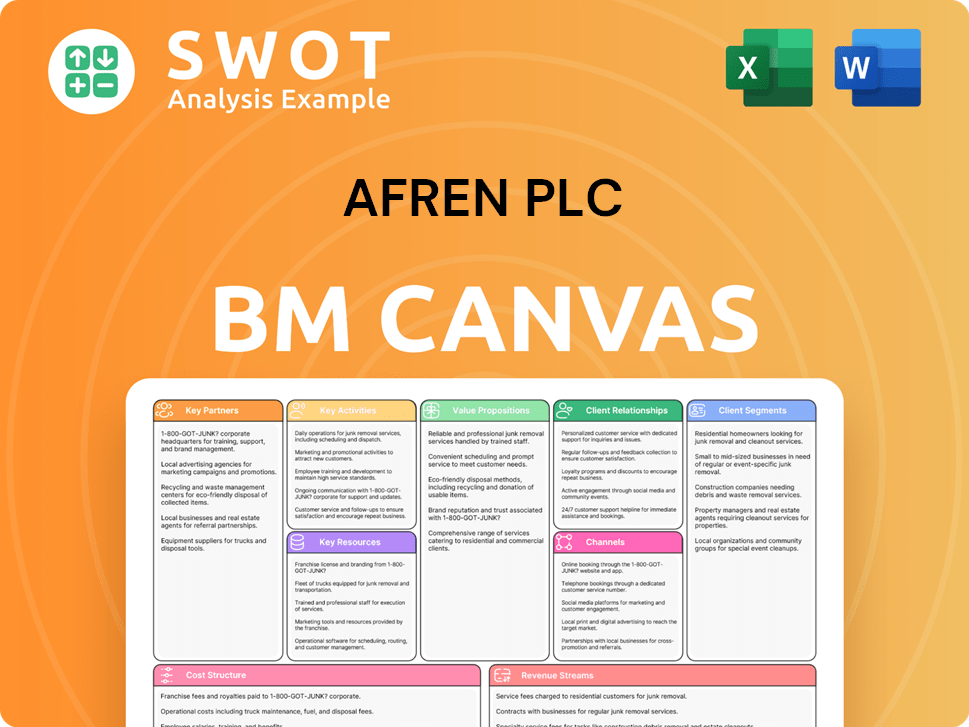
What Risks Could Slow Afren PLC’s Growth?
The downfall of Afren PLC, a former independent oil and gas exploration and production company, underscores the critical nature of risk management in the volatile oil and gas sector. The company faced a confluence of challenges that ultimately led to its collapse, providing valuable lessons for investors and industry professionals regarding the assessment of financial and operational risks.
Afren's demise serves as a cautionary tale, highlighting the importance of prudent financial management and diversification in the face of fluctuating commodity prices and complex geopolitical environments. Understanding the specific risks that contributed to Afren's failure is crucial for anyone involved in business analysis and investment within the oil and gas industry.
The primary obstacle for Afren PLC was its substantial financial leverage, which it struggled to manage. The company defaulted on its bonds in March 2015 by missing a $15 million interest payment, triggering a series of financial difficulties. This default was a key factor in the suspension of its shares in July 2015.
Afren operated in a highly competitive oil and gas market, both in West Africa and globally. Declining oil prices significantly impacted Afren's revenue, with a reported halving of revenue in the first quarter of 2015. This volatility made financial planning and debt management exceedingly difficult.
Operational issues, including delays in installations and repair work, hampered Afren's output. A significant blow came from the reduction in previously published estimates of reserves and resources in Iraqi Kurdistan, leading to the write-down of these assets to no value on the balance sheet, representing a loss of over $1.0 billion.
The operating environment in countries like Nigeria presented considerable risks, including security concerns, asset vandalism, and community unrest. Regulatory changes and the complex operating environment in Nigeria contributed to a decline in investment in the Nigerian oil and gas sector.
Afren's high debt levels and inability to meet its debt obligations were critical weaknesses. The missed $15 million interest payment on its bonds in March 2015 was a pivotal event. The company's debt burden hindered its ability to adapt to changing market conditions and operational setbacks.
The challenges faced by Afren, including financial distress and operational setbacks, contributed to a decrease in investor confidence. This decline in confidence resulted in a reduced appetite for investments in the company, further exacerbating its financial difficulties.
While Afren attempted to manage risks through diversification and risk management frameworks, its specific financial and operational challenges proved insurmountable. The company's failure highlights the importance of robust risk management strategies tailored to the specific operating environment.
Afren's financial struggles are evident in its performance leading up to its collapse. For example, the company's revenue halved in the first quarter of 2015 due to declining oil prices. The write-down of over $1.0 billion of assets in Iraqi Kurdistan further eroded its financial position.
Operational delays and the volatile oil market significantly impacted Afren. The company's production was affected by delays in installations and repairs. The decline in oil prices directly affected Afren's revenue, which made it difficult to sustain operations and service debt.
The oil and gas industry typically manages risks through diversification and robust risk management frameworks. However, Afren's specific financial and operational challenges proved too difficult to overcome. The company's failure underscores the importance of tailored risk management strategies.
The case of Afren PLC provides critical insights for business analysis and investment decisions in the oil and gas sector. The company's demise is a reminder of the importance of financial prudence, effective operational management, and a deep understanding of the geopolitical landscape. To gain further insights, consider reading about the Competitors Landscape of Afren PLC.
Afren PLC Porter's Five Forces Analysis
- Covers All 5 Competitive Forces in Detail
- Structured for Consultants, Students, and Founders
- 100% Editable in Microsoft Word & Excel
- Instant Digital Download – Use Immediately
- Compatible with Mac & PC – Fully Unlocked
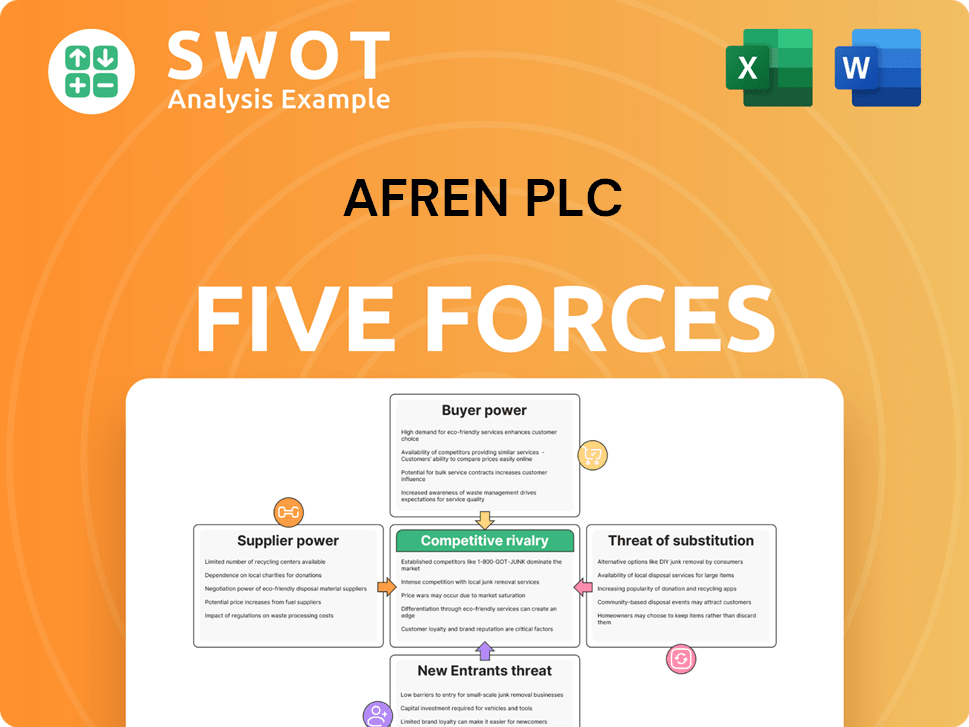
Related Blogs
- What are Mission Vision & Core Values of Afren PLC Company?
- What is Competitive Landscape of Afren PLC Company?
- How Does Afren PLC Company Work?
- What is Sales and Marketing Strategy of Afren PLC Company?
- What is Brief History of Afren PLC Company?
- Who Owns Afren PLC Company?
- What is Customer Demographics and Target Market of Afren PLC Company?
Disclaimer
All information, articles, and product details provided on this website are for general informational and educational purposes only. We do not claim any ownership over, nor do we intend to infringe upon, any trademarks, copyrights, logos, brand names, or other intellectual property mentioned or depicted on this site. Such intellectual property remains the property of its respective owners, and any references here are made solely for identification or informational purposes, without implying any affiliation, endorsement, or partnership.
We make no representations or warranties, express or implied, regarding the accuracy, completeness, or suitability of any content or products presented. Nothing on this website should be construed as legal, tax, investment, financial, medical, or other professional advice. In addition, no part of this site—including articles or product references—constitutes a solicitation, recommendation, endorsement, advertisement, or offer to buy or sell any securities, franchises, or other financial instruments, particularly in jurisdictions where such activity would be unlawful.
All content is of a general nature and may not address the specific circumstances of any individual or entity. It is not a substitute for professional advice or services. Any actions you take based on the information provided here are strictly at your own risk. You accept full responsibility for any decisions or outcomes arising from your use of this website and agree to release us from any liability in connection with your use of, or reliance upon, the content or products found herein.